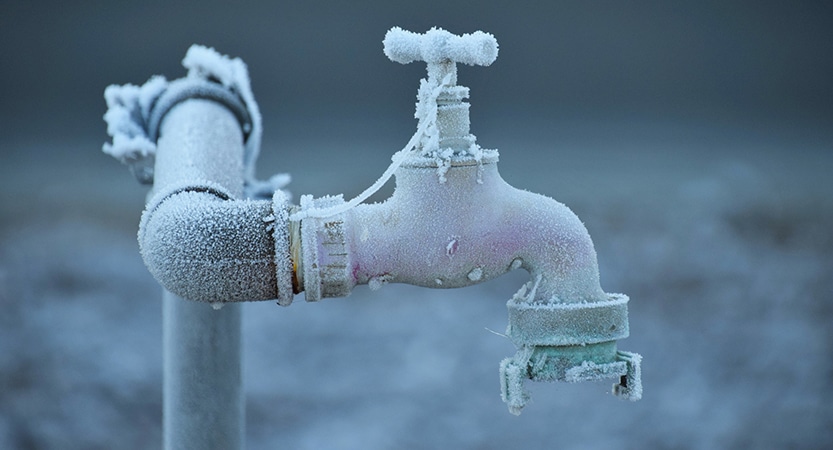Ways to Defend Plumbing System from Cold Weather: Essential Tips
Ways to Defend Plumbing System from Cold Weather: Essential Tips
Blog Article
Were you interested in advise on How To Avoid Freezing Pipes?

Cold weather can ruin your plumbing, specifically by freezing pipelines. Right here's exactly how to prevent it from occurring and what to do if it does.
Intro
As temperatures decline, the threat of icy pipes rises, potentially causing costly repair work and water damages. Recognizing exactly how to stop icy pipelines is vital for homeowners in chilly climates.
Avoidance Tips
Insulating susceptible pipes
Wrap pipelines in insulation sleeves or make use of warmth tape to shield them from freezing temperatures. Focus on pipelines in unheated or external locations of the home.
Heating techniques
Keep interior spaces effectively warmed, especially locations with pipes. Open cupboard doors to enable warm air to flow around pipes under sinks.
How to determine frozen pipes
Look for lowered water circulation from taps, uncommon odors or sounds from pipelines, and noticeable frost on revealed pipes.
Long-Term Solutions
Architectural modifications
Take into consideration rerouting pipes away from outside walls or unheated locations. Add additional insulation to attics, basements, and crawl spaces.
Updating insulation
Purchase high-grade insulation for pipelines, attic rooms, and walls. Correct insulation helps preserve regular temperatures and reduces the threat of icy pipes.
Protecting Outdoor Plumbing
Yard hoses and outside taps
Separate and drain garden pipes prior to wintertime. Set up frost-proof faucets or cover outside taps with shielded caps.
Comprehending Frozen Pipes
What creates pipes to freeze?
Pipelines freeze when exposed to temperature levels listed below 32 ° F (0 ° C) for prolonged durations. As water inside the pipes freezes, it broadens, taxing the pipeline wall surfaces and potentially creating them to rupture.
Risks and problems
Icy pipes can lead to water supply disturbances, residential property damage, and costly repair work. Ruptured pipes can flooding homes and trigger extensive architectural damage.
Signs of Frozen Pipes
Recognizing frozen pipes early can stop them from breaking.
What to Do If Your Pipelines Freeze
Immediate actions to take
If you think frozen pipelines, keep taps open up to ease pressure as the ice melts. Utilize a hairdryer or towels taken in hot water to thaw pipes gradually.
Verdict
Preventing icy pipelines calls for positive actions and fast responses. By understanding the reasons, indications, and preventive measures, house owners can safeguard their plumbing throughout cold weather.
6 Proven Ways to Prevent Frozen Pipes and Protect Your Home
Disconnect and Drain Garden Hoses
Before winter arrives, start by disconnecting your garden hoses and draining any remaining water. Close the shut-off valves that supply outdoor hose bibs and leave the outdoor faucet open to allow any residual water to drain. For extra protection, consider using faucet covers throughout the colder months. It’s also important to drain water from any sprinkler supply lines following the manufacturer’s directions.
Insulate Exposed Pipes
Insulating your pipes is an effective way to prevent freezing. Pipe insulation is readily available at home improvement stores and is relatively inexpensive. Pay close attention to pipes in unheated areas such as the attic, basement, crawl spaces, or garage. Apply foam insulation generously to create a buffer against the cold. You can also wrap your pipes in heat tape or thermostat-controlled heat cables for added warmth.
Seal Air Leaks
Inspect your home for any cracks or openings that could let in cold air. Seal any holes around the piping in interior or exterior walls, as well as the sill plates where your home rests on its foundation. Additionally, make sure to keep your garage door closed unless you’re entering or exiting. Leaving it open creates a significant air leak that can lead to frozen pipes.
Allow Warm Air Circulation
During cold snaps, it’s essential to allow warm air to circulate evenly throughout your home. Leave interior doors ajar to promote better airflow. Open kitchen and bathroom cabinets to help distribute heat consistently around the rooms. If you have small children or pets, be sure to remove any household chemicals or potentially harmful cleaners from open cabinets for safety.
Let Faucets Drip
A small trickle of water can make a big difference in preventing ice formation inside your pipes. When temperatures drop significantly, start a drip of water from all faucets served by exposed pipes. This continuous flow helps prevent the water from freezing. Additionally, running a few faucets slightly can relieve pressure inside the pipes, reducing the chances of a rupture if the water inside does freeze.
https://choateshvac.com/6-proven-ways-to-prevent-frozen-pipes-and-protect-your-home/

I came across that blog posting on Prevent Frozen Pipes when doing research the internet. Kindly take the time to share this content if you liked it. Thank-you for going through it.
Call Today Report this page